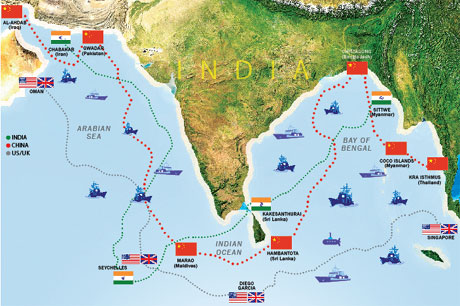Submarine cables, critical infrastructure for global communications, are as essential to the maritime industry as they are to modern telecommunications. In India, these cables not only serve as the backbone for internet connectivity but also play a vital role in supporting maritime operations, including port management, logistics, and naval communication. With over 99% of international data transmitted through these undersea cables, their significance in the maritime industry cannot be overstated.
Importance of Submarine Cables for Maritime Operations
For India’s maritime industry, efficient data transmission is crucial to both commercial shipping operations and national security. Ports, shipping lanes, and the broader naval defense infrastructure rely heavily on these cables for real-time communication, tracking, and data processing. As a country strategically located in the Indian Ocean Region (IOR), India serves as a key hub for submarine cables connecting Asia, the Middle East, Europe, and Africa.
India’s Submarine Cable Infrastructure
India has emerged as a vital player in the global submarine cable network, hosting several key undersea cables that contribute to international connectivity. Major cables landing in India include the SEA-ME-WE series, Bay of Bengal Gateway (BBG), and the India-Asia-Xpress (IAX). These cables not only link India to other parts of the world but also play an instrumental role in maritime activities, supporting internet services for ships and vessels navigating Indian waters.
Additionally, cables like the Chennai-Andaman & Nicobar Island (CANI) Submarine Cable System are crucial for enhancing communication in remote maritime zones. By connecting India’s mainland to the Andaman and Nicobar Islands, this cable supports naval and civilian maritime operations in a strategically significant area, strengthening India’s presence in the eastern Indian Ocean.
Global Comparison: Submarine Cables in Maritime Context
Globally, countries like the United States, Japan, and Singapore have extensive submarine cable networks that are pivotal to their maritime and trade industries. Singapore, for example, has emerged as a global maritime hub due in part to its dense network of undersea cables, which supports shipping logistics, port operations, and naval coordination.
When compared to these global leaders, India’s growing network of submarine cables is positioning the country as a central player in the Indo-Pacific maritime domain. However, gaps remain in terms of security, redundancy, and maintenance, which are critical given the threat of cable damage from fishing activities, natural disasters, or intentional sabotage.
Challenges and Opportunities for India’s Maritime Sector
While submarine cables provide immense opportunities for enhancing maritime security, trade, and naval operations, challenges persist. The maritime industry is increasingly vulnerable to risks such as cable cuts due to shipping anchors, undersea earthquakes, or potential geopolitical conflicts. As such, ensuring the resilience and security of India’s submarine cable network is vital for sustaining maritime operations.
Moreover, collaboration between the Directorate General of Shipping (DG Shipping), the Ministry of Ports, Shipping, and Waterways (MoPSW), and private stakeholders in the maritime and telecommunications sectors is essential to safeguard this critical infrastructure. Investments in submarine cable security protocols, maintenance practices, and rapid restoration strategies are urgently needed.
Strengthening India’s Maritime Infrastructure
Submarine cables are indispensable for the maritime industry’s digital backbone, providing real-time data transmission that facilitates everything from naval coordination to port logistics. For India to continue growing as a maritime superpower, it must ensure that its submarine cable infrastructure is resilient, secure, and capable of supporting both commercial and defense operations in an increasingly interconnected world.
As India continues to expand its maritime ambitions, the role of undersea cables will be central to enhancing maritime communication, security, and operational efficiency, further solidifying India’s position in the global maritime ecosystem.
Maritime News, India, Submarine Cables, India’s Maritime Infrastructure, Undersea Cables, Shipping Logistics, Port Operations, Naval Coordination, Chennai – Andaman and Nicobar Island, CANI, Submarine Cable System, SEA-ME-WE series, Bay of Bengal Gateway, BBG, India-Asia-Xpress, IAX





One thought on “Submarine Cables in India: A Maritime Industry Perspective”